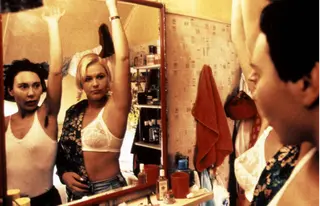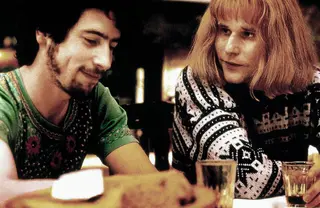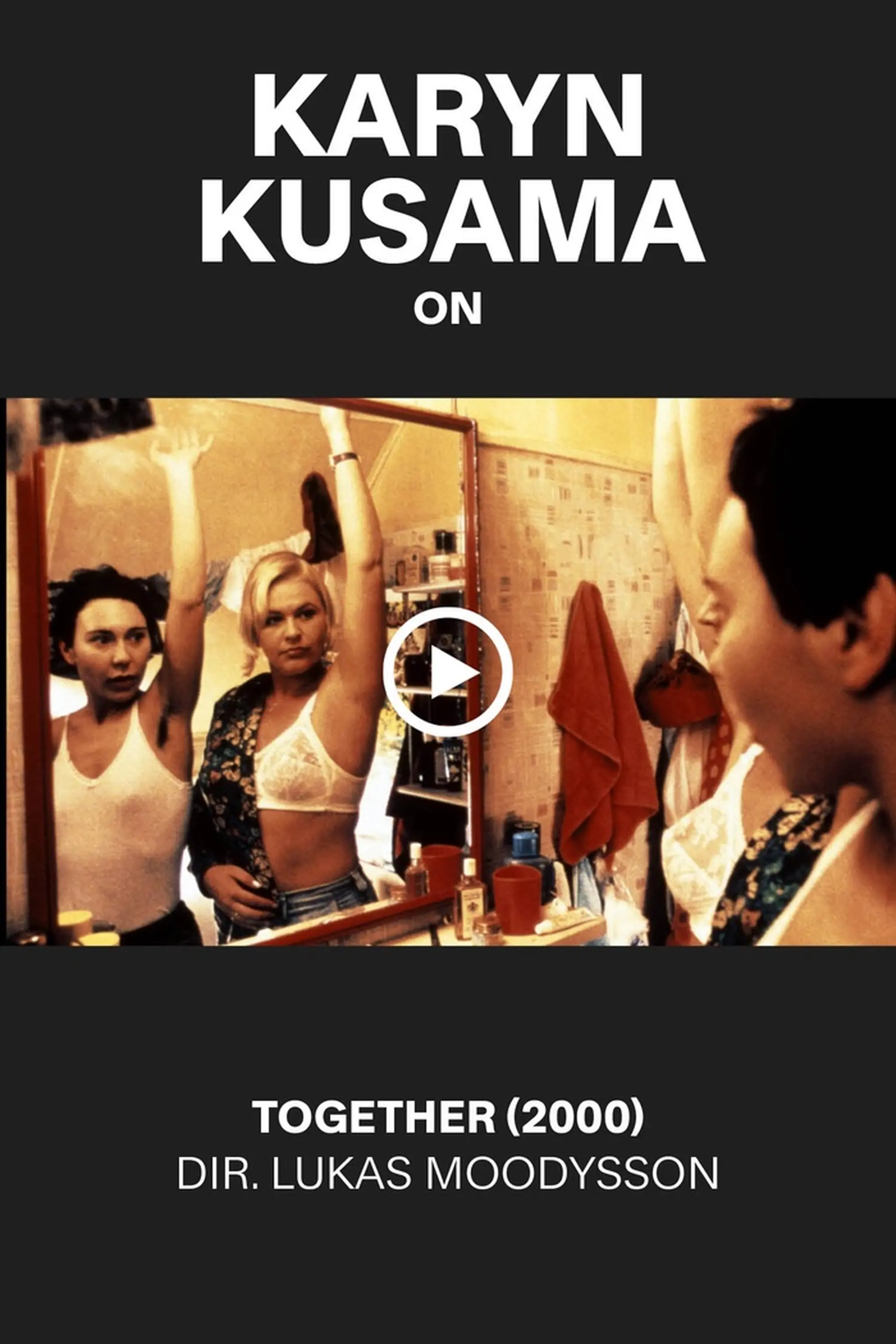Back On The Commune
By Molly Prentiss
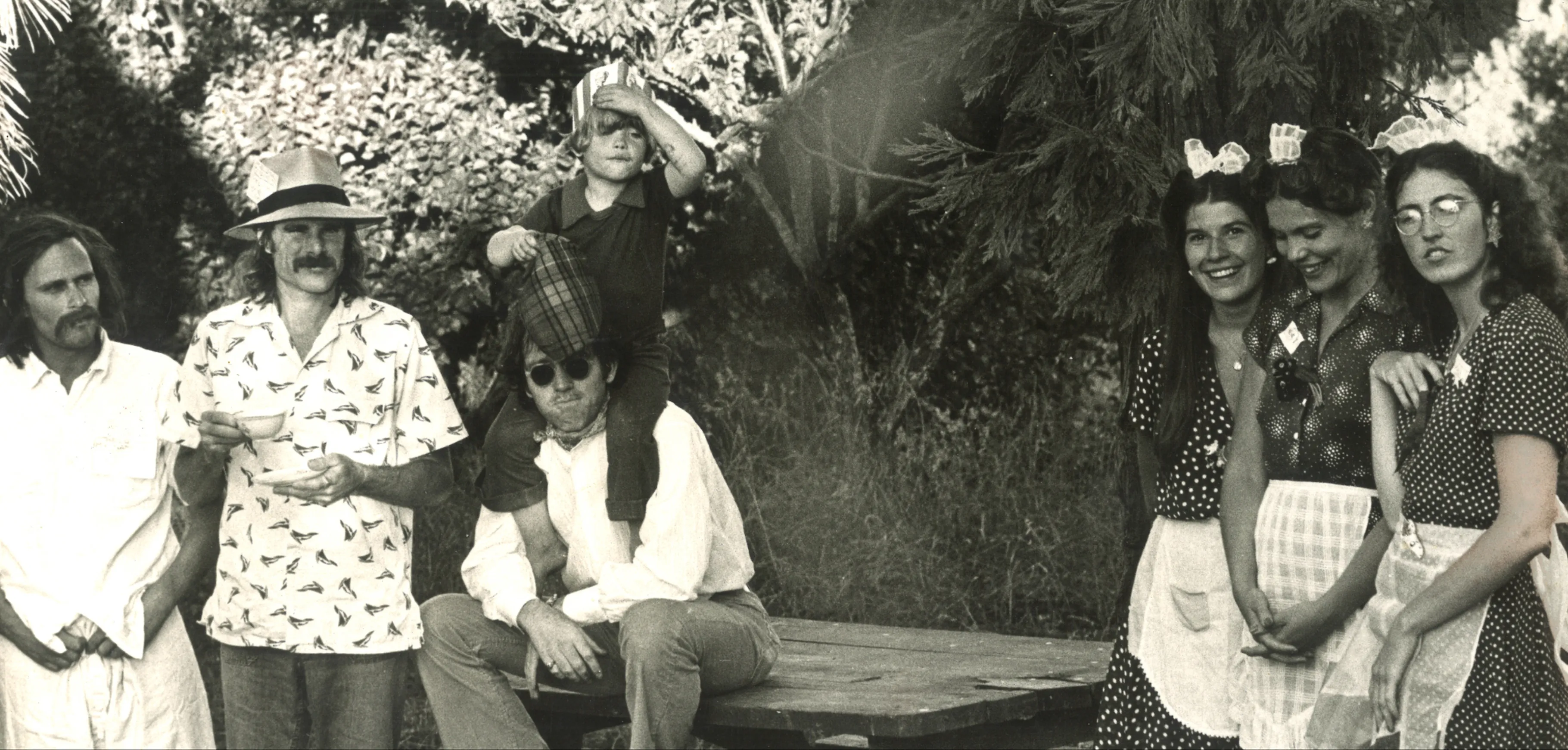
Communal living in La Selva Beach, Santa Cruz, 1978 (photo by David Sievert, courtesy of Molly Prentiss)
back on the commune
molly prentiss
On the humanity and hippie nostalgia of Lukas Moodysson’s Together
August 25, 2023
Franco is dead! This radio announcement of the demise of the Spanish dictator is cause for celebration in the Swedish commune of Tillsammans, the setting of director Lukas Moodysson’s 2000 film of the same name (the English translation for Tillsammans is “together”). In this opening scene, the motley cohabitants are clad in scratchy-looking Swedish wool and boho headscarves; many of the men are bearded (“I wanted to make a film with people with beards,” Moodysson said when the film came out); they dance around, kissing each other, lifting and spinning their children, awash in smoky evening light and positivist communal elation. Their shared digs are suburban but cozy, with red-painted walls. There are enough of them (ten, if you include the two kids) for it to feel like a party. It is 1975. A dictator has fallen. The joy is contagious and a little bit loony, and the viewer is invited to settle into it smiling, expecting to be amused.
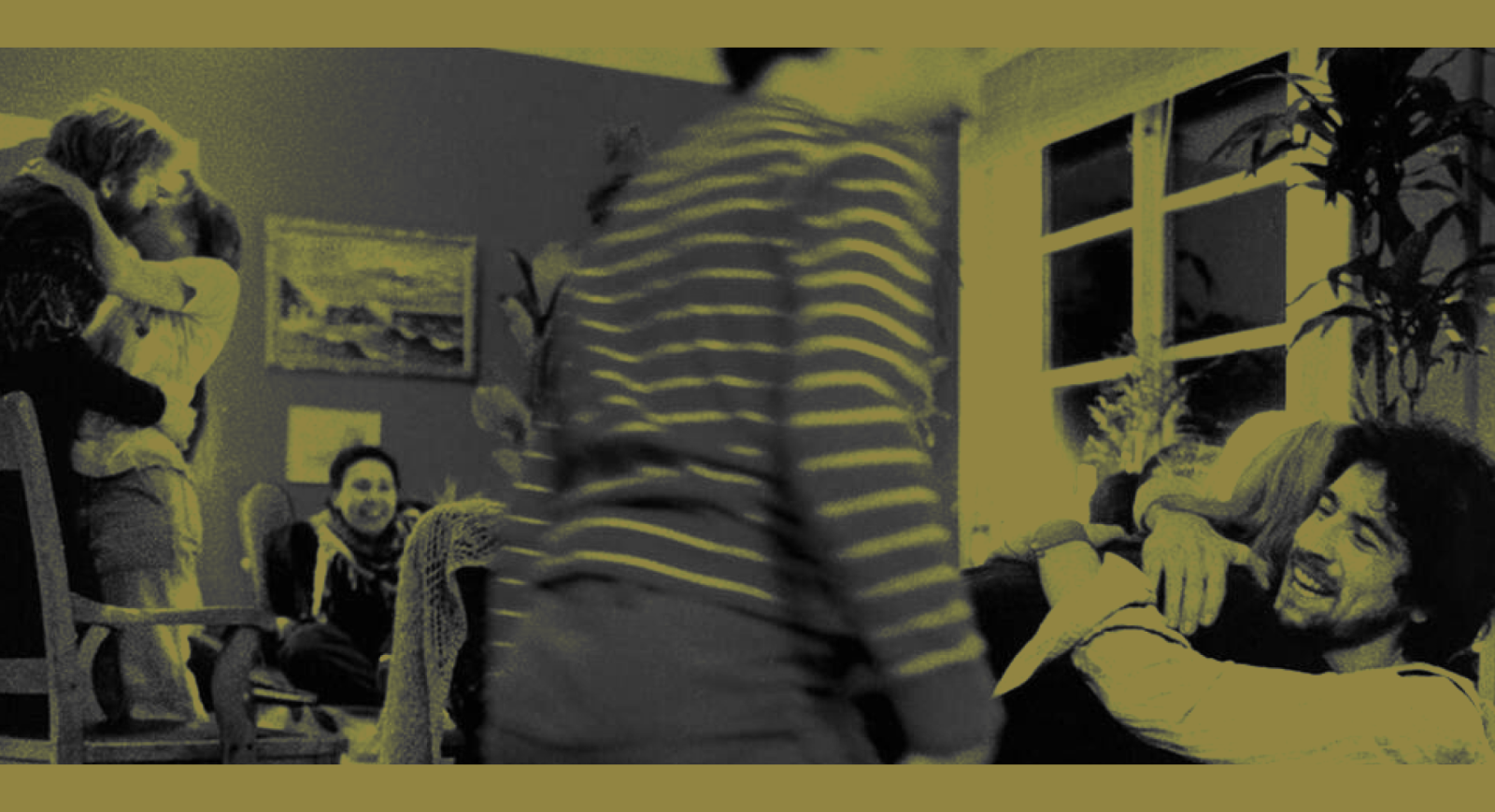
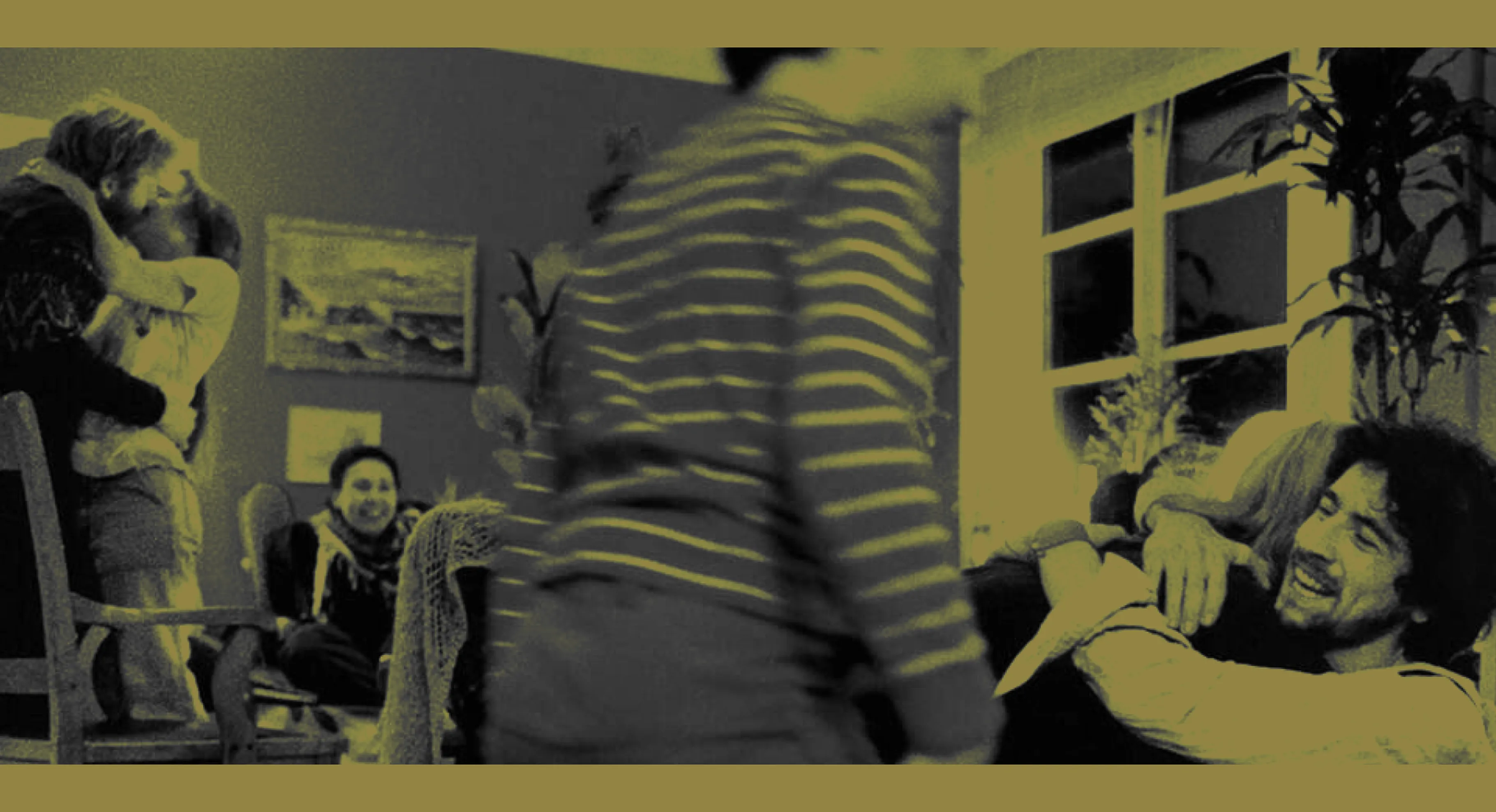
Together, dir. Lukas Moodysson, 2000
The setup is an experiment: The group is attempting to live communally in a large house in Stockholm. Everyone has chosen to be here based on one ideological intention or another, having each tethered themselves to a political or personal cause. The kind and pitiable Göran (Gustaf Hammarsten) is the Pacifist; the jubilantly Anna (Jessica Liedberg) is the Righteous Feminist; Anna’s ex, Lasse (Ola Norell Rapace), is the Macho Provocateur; sweet and determined Klas (Shanti Roney) is the Gay Dreamer; giddily careless Lena (Anja Lundqvist) is the Free Lover; curmudgeonly Erik (Olle Sarri) is the Vigilant Marxist; and humorless Signe and Sigvard (Cecilia Frode and Lars Frode) are the token Tree Huggers. “All of us here are revolting against the bourgeois way of living,” claims Anna, whose burgeoning lesbianism seems to be more about politics than sexual preference. “I don’t judge about it intellectually,” counters Lena. “I just don’t want to be like my mum.”
When Göran’s normie big sister, Elisabeth (Lisa Lindgren), shows up battered and bedraggled and toting her two kids in a last-ditch effort to escape her delinquent drunk of a husband, the political prerequisite for living under this shared roof is called into question, and the film’s central drama—how this new addition might impact the group, and whether or not it will be the reason for its inevitable implosion—is set into motion. Despite this shake-up, the early scenes promise less plot than texture. As the lens abandons Göran and his sister to follow whoever’s doing whatever—smoking a spliff, deciding not to shave their armpits—we are pulled away from any individual narrative toward that of the collective whole. We’re here to soak in the specific vibes of this countercultural moment of the mid-1970s, one we, as latter-day viewers, are often so nostalgically enchanted by.
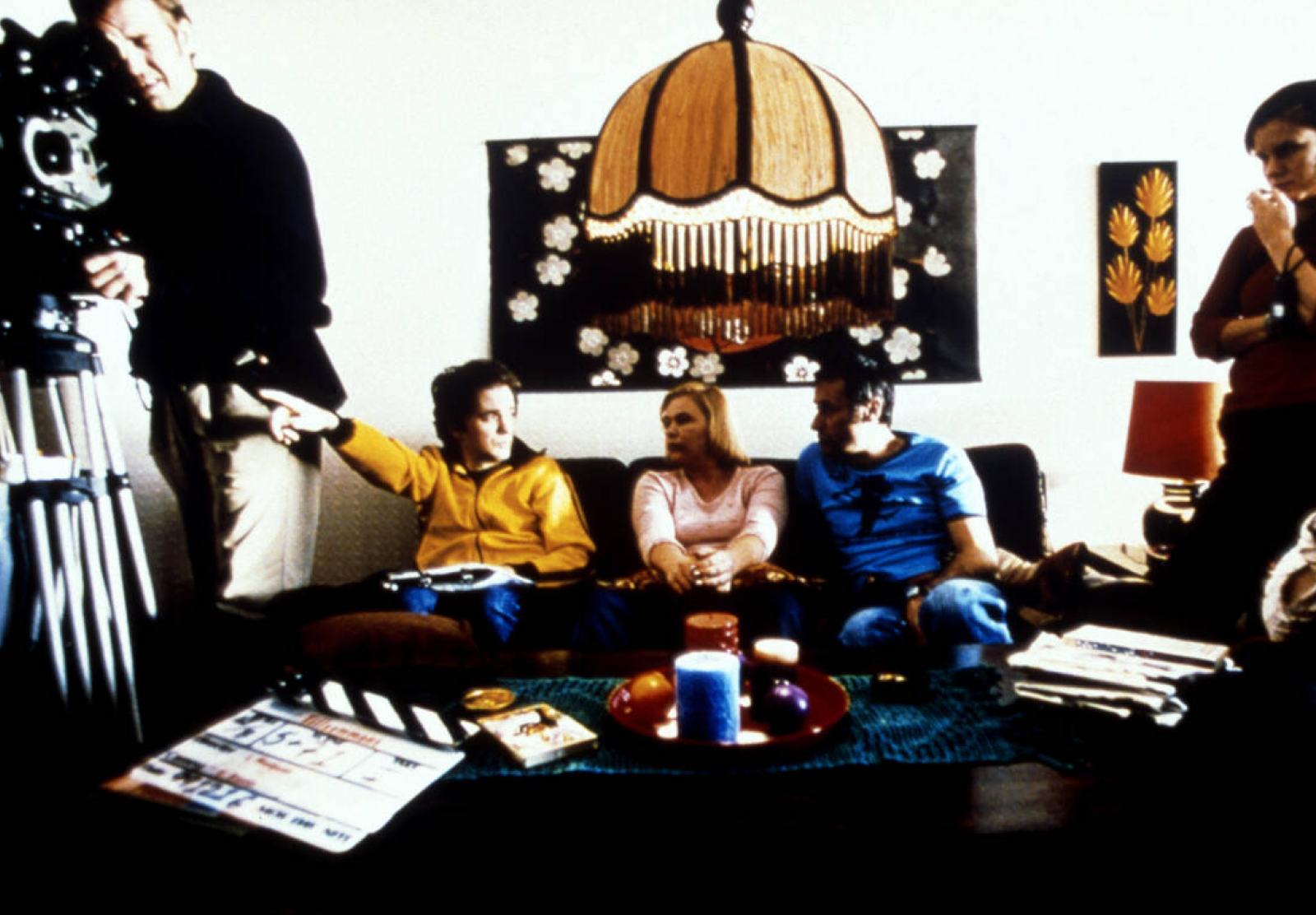
Lukas Moodysson with cast and crew of Together, 2000
I am open to this kind of commune-themed enchantment but I’m also on high alert, as I am whenever I confront a cultural work that depicts communal living. I myself grew up in a commune—in 1979 my parents bought land in Santa Cruz, California, with a group of fellow hippies, and they still live there, all together, to this day. Yes, the men were mostly bearded, some mustached. Yes, the women wore baseball socks and cutoff Levi’s. But my childhood wasn’t drenched in patchouli and our commune did not fail. I am keenly aware of how the stories of the gung-ho optimism of 20th-century socially engineered communal living can appear to our contemporary vantage point, a decade or two past their highwater mark. We all know the selling points of these free-spirited, anti-capitalist havens—as well as their unavoidable failings, their culty undercurrents and their naive forays into whatever social wilderness lies outside the system. We know these corduroy couches, these lentils, this pantless debate about workers’ unions. If Moodysson’s film delivers on our initial expectations, we’ll spend the 106 minutes of this unorthodox time capsule being entertained by the funk and folly of hippie living. If the film surpasses these initial expectations (spoiler alert: It does), we’ll get a chance to discover the complications behind the humorous façade. To look underneath the orange carpet of trope and discover the real dirt of togetherness, which is our shared humanity.
Together is Moodysson’s second feature film; his first, 1998’s Show Me Love (Fucking Åmål), is a love story about two teen girls who live in a small Swedish town and dream of escape. It made a critical splash and won four Guldbagge Awards from the Swedish Film Institute. That film’s quasi-documentary style paved the way for Together, which involves a degree of realism that’s so dead-on it’s almost impossible to detect at first that Moodysson is filming Together two and a half decades after it’s set. (Chalk this up in part to cinematographer Ulf Brantås and leftist artist Carl Johan De Geer, who created the film’s environments.) “There’s something about the ’70s that’s automatically funny,” Moodysson said at the time. “I even considered setting it in the present to avoid that.” Instead, the director chose to double down on the retro aesthetic (fashion-wise and filmically), hoping that exactitude would change the expectation. The grainy, 35mm film stock, the precise orange-brown of the polyester, the frayed hair, the paper cigarette packets, the angsty idealist banter: Every detail has been fussed over. One scene in the communal kitchen depicts a heated debate about “washing up” the shared spaces, which one commune member claims is “not working out” and another argues is entirely bourgeois. From the pea-green floral wallpaper to the mumblecore style dialogue, the look and feel is pitch-perfect.

Yet despite this almost obsessive adherence to the visual accuracy of the era, a different treatment is given to Together’s characters, who seem to be reflected in the fun-house mirror of exaggeration, each a wavy caricature of a different kind of bohemian (see descriptors of these caricatures—mine, not Moodysson’s—above). The warp extends outward, swallowing even conversation topics and film dissolves: One child character is named Tet, after the 1968 Vietnam War offensive; the Tree Huggers argue that Pippi Longstocking is a capitalist-materialist; instead of fading to black between scenes, Moodysson opts for Communist red. A pleasing, if puzzling, effect is created by this aesthetic layering: part hyper-real home movie, part SNL skit. Are we witnessing life as it actually was in this specific time period, or is Moodysson having fun with hyperbole? Did this director ever experience commune life himself, or did he simply imagine what it might have been? Is he critiquing it or revering it? Both? It is distinctly hard to grasp the tone of the film—or rather the intention behind the tone. Are we allowed to—supposed to—laugh?
Well, we do. We laugh as the Tree Huggers abandon the commune for literally and figuratively greener pastures (“We’re moving to Mother Earth,” they tell the group), or as the Free Lover orgasms audibly while having sex with the Marxist on the other side of the wall from her partner, the Pacifist. It is funny (and sad) to see the children of the commune drinking wine and pretending to be the Chilean leader Pinochet as their parents neglect them in favor of getting wasted and screaming about socialism downstairs. We are at once unsettled and comfortable in a story that aligns to our prejudices about this failed experiment. We all know what happens when a bunch of idealists try to live together, each of them tooting their own political blow horn, refusing to do their dishes, imposing their vegetarianism on each other. We, the viewers, know that this togetherness cannot last, that it will burn down faster than a pile of bras.
Is this what’s funny, the fact that we know what’s coming? That we can predict the breakups caused by the partner swaps, foresee the greater fallout that follows the dinner-table fight? Are we laughing at the extremity of the characters, how they’ve trapped themselves in the confines of their myopic beliefs, each poking little holes in their collective boat as their individualism rages? Do we laugh at the Marxist, the Pacifist, the Dreamer as we laughed at Bernie Sanders in mittens, man whose ideals got the best of him?
Stills from Together
I imagine myself as a little child, crossing my arms and furrowing my brows at Moodysson while flatly declaring, “It’s not supposed to be funny.” “It” being the way my family chose to live, which actually had nothing to do with Marxism or polyamorous sex or living off the land but was primarily a pragmatic alternative to the insular hell that is the nuclear family. Part of me wants to dive into the practicalities: how my parents and their cohorts set up an industrial dishwasher and a simple cooking-and-cleaning schedule to avoid those inevitable fights about dish duty; how they decided early on never to have meetings, which they knew would backfire, but instead to address household issues over dinner, which everyone ate together each night at seven. I want to explain the benefits of shared childcare, the joy and deliciousness of those nightly dinners, which were very rarely chickpea-centric. Yes, people argued, people left, people married each other's exes, people lost their cool. But isn’t all of that just part of life, not just life in community?
Yes, and Moodysson knows this. As Together progresses, the film itself widens in the manner of an expanding mind. Even if the director chides his caricatures for their silliness, their naivete, their blind spots, it is by the same skewer, poked through layers of crochet and flesh, that their tenderness is revealed. Elisabeth’s husband, the Working-Class Drunk (Rolf, who is played by Michael Nyqvist) breaks down completely, showing up at the commune with flowers and begging forgiveness in a way that is too real and earnest for her or anyone else at the commune to deny. As they slow-dance together in the commune’s living room, a layer of caricature falls away; everyone in the scene becomes more original, more real. Göran finally gathers up his anger and courage to kick out the Free Lover, who has been yanking his chain for far too long; he is left alone but empowered, and we respect him more than we did when he was just the Pacifist, a simpler version of himself, a bearded outline. We never expect the Gay Dreamer to make good on his efforts to seduce the Macho Provocateur, but when he does, and when they are lying in postcoital repose with bewildered adoration in their eyes, we cannot help but feel something deeper than amusement, something closer to the warmth of another human’s breath against your neck.
My defensiveness never did rise to any kind of meaningful pitch, or fully overwhelm me to the point of disliking the film, and I believe this is due to this director’s delicate tonal see-saw—irony and earnestness, pessimism and optimism, humor and its direct opposite: a sadness that rests like a sleeping bear under this alleged utopia, where so much yearning lives. Though I can never get a firm grasp on the intention behind the tone, maybe that matters less than I thought it did. Perhaps I had been thinking about this movie as an embodiment of ideals—speculating about Moodysson’s own agenda—when it could be understood in a much simpler way, as the creation of an experience. Perhaps by inflating and then popping the bubble of trope, Moodysson is showing us that it doesn’t matter what our politics say about our way of life but rather how it feels to live it.
“You could say that we are like porridge,” Göran pontificates earnestly while making breakfast one morning. “First we’re like small oat flakes: small, dry, fragile, alone. But then we’re cooked with the other oat flakes and we become soft.” This softness emerges in the film as the pressures of relationships and reality create contractions, everyone’s rigidness giving way to a new liquidity. When Rolf and Elisabeth join in the communal fray, along with a neighborhood preteen seeking refuge from his rigid suburban parents, a new, amoebic blob of togetherness is born, one that is less intentional than incidental. The whole thing is messy, the project has been some kind of disaster, the opposite of any kind of imagined ideal. And yet here they all are, coexisting despite everything. And wasn’t that the point in the first place?
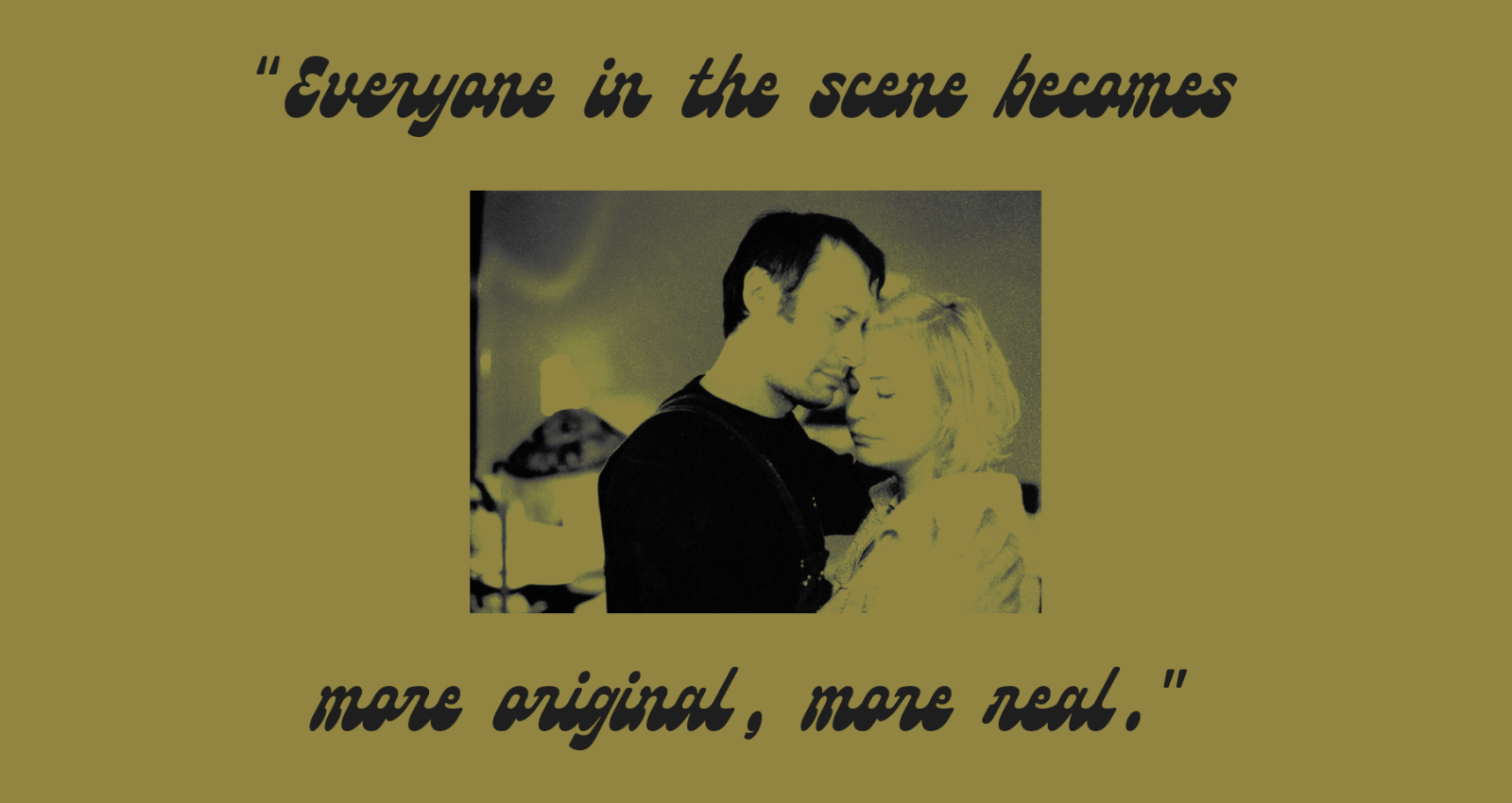
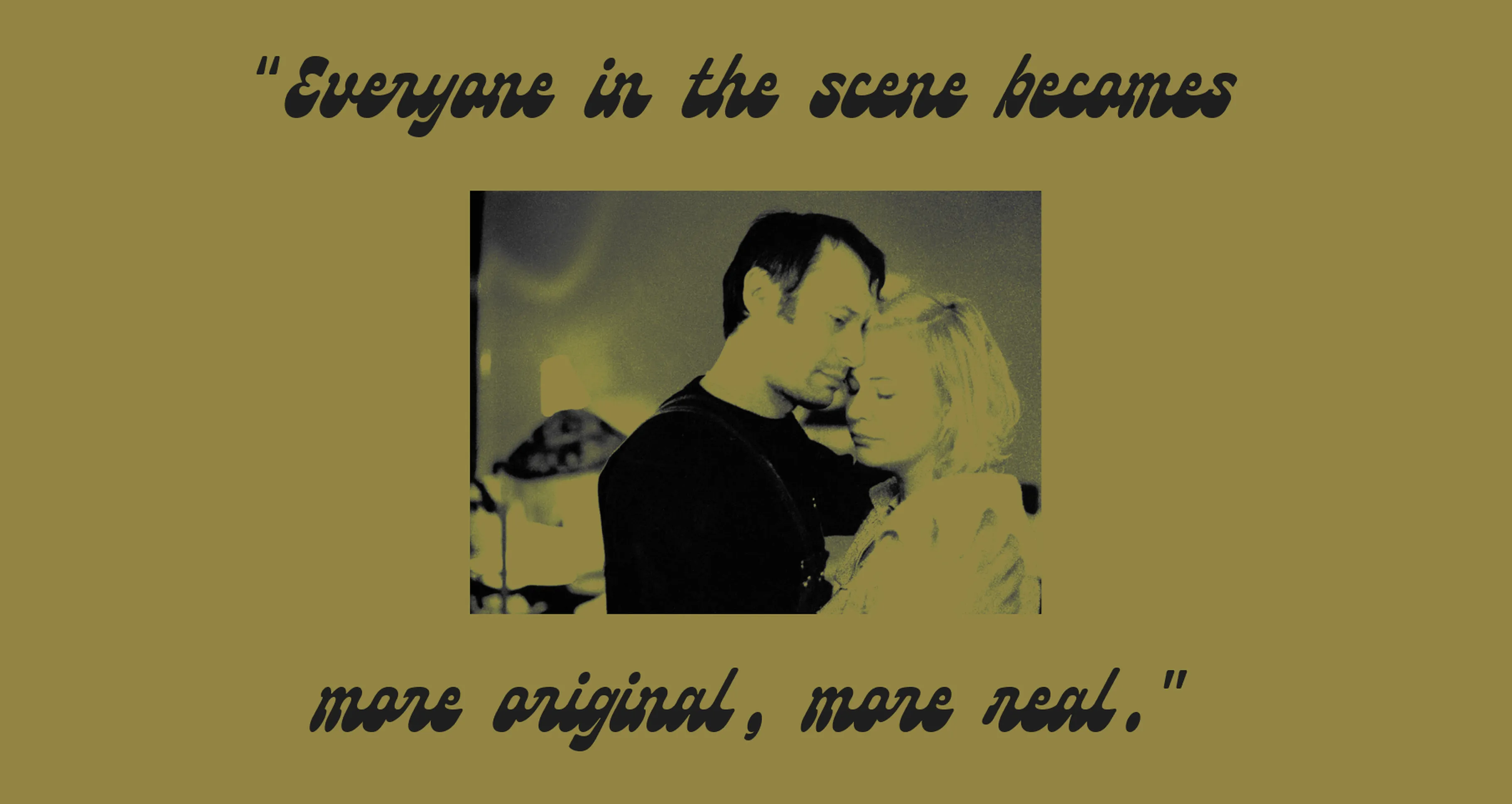
In the final scene, the remaining group plays a game of pickup soccer in the snow. ABBA blares in the background. A warm sense of hope fills the frame before the final red fade. If this ending lands like it should (spoiler alert: It does) we feel distinctly that this band of misfits, however flawed and funnily idealistic they’ve been, however absurdly they’ve acted and dressed, are lucky to be exactly where they are, moving their bodies together through the cold.
